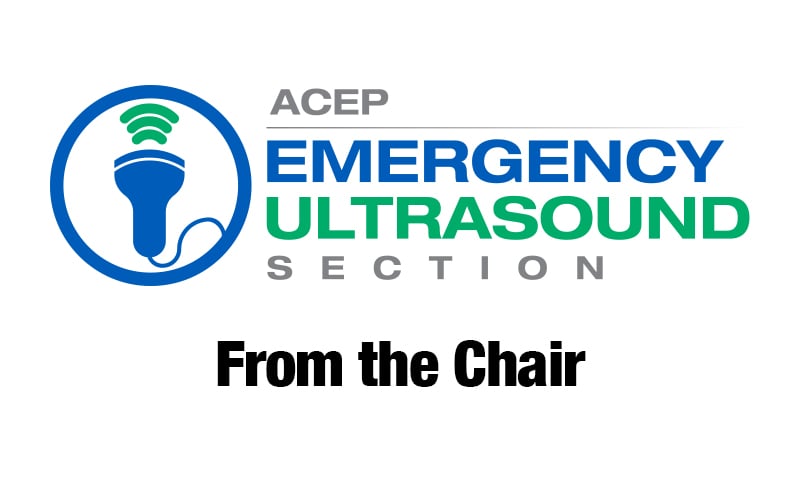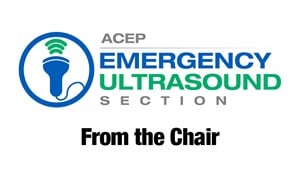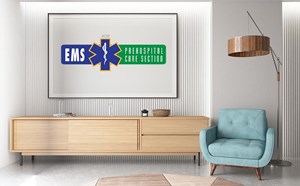
Chair’s Corner
Summer’s coming to a close and Fall’s just around the corner. It’s the start of a new school year and, for ACEP members, it’s back to the Annual Scientific Assembly.
Mark your calendar for ACEP19 in Denver and for the Emergency Ultrasound Section (EUS) meeting on Sunday, October 27, at 1 p.m. in the Hyatt Regency Capitol Ballroom 4. This year’s business meeting will conclude with a town hall session to flush out where members stand on point-of-care ultrasound “hot” topics and the impact of handheld devices on our daily practice. Make sure to catch the Research Forum Sunday through Tuesday to see the latest work from our colleagues. Lastly, come ready to connect with colleagues! We’ll discuss our challenges as well as possible solutions.
Since this is my last “Chair’s Corner” letter, I wanted to thank the editors of the newsletter for making this publication a high-value read. The information and breadth of topics covered in the newsletter continue to amaze me. After more than 15 years performing ultrasound I am still learning, and this publication remains an intriguing source of interesting and new material. This month leans heavily on the pragmatic, highlighting the clinical application of optic nerve sheath diameter in our Cases that Count series and updating us on International Ultrasound in Liberia. There is a guide to organizing a course on pediatric ultrasound (with pictures of probably the youngest ultrasound model ever!), finding solutions to challenges while learning ultrasound as a resident and tips on cannulating the subclavian vein. Notably, there is an excellent resource on the issues surrounding sterile probe covers and a handy chart inventorying the numerous choices leaders in EUS have when assisting with purchasing decisions (as if they ever taught us that in medical school or residency).
“Learn something new” should be an emergency ultrasound slogan. Hard to imagine all of the progress we’ve made as a group since the ’90’s. This year, I’ve learned the importance of ACEP EUS advocacy. Despite our progress, external organizations continue to misunderstand the clinical application of Emergency Medicine Point-of-Care Ultrasound (POCUS), and mischaracterize its application. Incredibly, organizations side-step the tremendous work and progress the EUS has made over the years to emphasize quality and safety. We continue to hear degrading monikers such as “non-imagers” and field unsubstantiated claims of inaccurate exam results from under-trained physicians. I’ve learned that these fixed mindsets may never change and will require constant reminding that (to borrow a quote from the late Daniel Patrick Moynihan), “they are entitled to their opinions but not their own facts.”
Members of the EUS Section will continue to respond to these “flare-ups” by redirecting the authors to ACEP’s Ultrasound Guidelines on quality or to the CORD Consensus Statement on training as well as to the Definition of Clinical Ultrasonography. It’s important for EUS Section members to remember that, in time of controversy, the effort that’s been put into these documents serve a purpose. Another thing I’ve learned throughout my tenure as EUS Chair is that the collegiality of the Section makes it easy to navigate difficult conversations with our colleagues in other fields and to make coherent arguments as to how and why POCUS remains an integral part of emergency medicine. When specific issues arise that require a show of organization and planning, the ACEP EUS excels at uniting us. However, if you’re forced to go at it alone, the most brilliant part of the Section membership is that when sending them the Section web page link, you can send the following note with it: “Hey…You’ve missed quite a bit. Go learn something new!”
Keep scanning everyone, and see you in Denver!
Daniel Theodoro, MD, MSCI, FACEP



